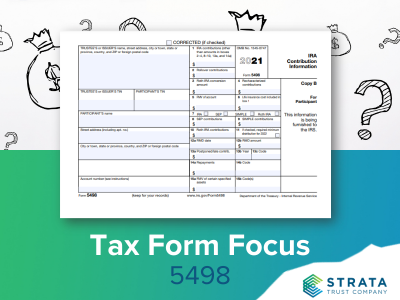If you’re saving for retirement in a tax-qualified vehicle like an IRA or an employer’s retirement plan, you probably understand the tax benefits associated with these types of accounts. You may also know that the sooner you contribute and invest, the more time your savings will have to grow before you need to use them in retirement. One way to maximize these benefits is by contributing up to the annual limit each year.
The amount you’re allowed to save each year in a tax-advantaged retirement savings account may be adjusted for increases in the cost-of-living index (COLA). The formula used to calculate these limits has caused some noticeable effects within the last three years:
- There was no increase to the amount you can put into an IRA for the year.
- The income limits that determine who can take a tax deduction for a Traditional IRA contribution and who can contribute to a Roth IRA have increased, enabling more taxpayers to benefit from saving in an IRA.
- The contribution limits for those who participate in a SEP or SIMPLE IRA plan have also increased, as have those for other employer-sponsored retirement plans.
Traditional & Roth IRA Contributions
| TRADITIONAL & ROTH IRA CONTRIBUTIONS | 2022 | 2021 | 2020 |
| Contribution limit | $6,000 | $6,000 | $6,000 |
| Age 50 catch-up contribution | $1,000 | $1,000 | $1,000 |
The maximum amount you may contribute to an IRA for 2022 is 100% of your compensation up to $6,000. If you are age 50 or older, you have the option of making an additional contribution of up to $1,000 each year. The maximum annual contribution and catch-up contribution limit applies in aggregate to all your Traditional and Roth IRAs.
| PHASE-OUT RANGES FOR DEDUCTING TRADITIONAL IRA CONTRIBUTIONS | 2022 Modified Adjusted Gross Income | 2021 Modified Adjusted Gross Income | 2020 Modified Adjusted Gross Income |
| Single and participating in an employer’s retirement plan | $68,000 – $78,000 | $66,000 – $76,000 | $65,000 – $75,000 |
| Married, filing a joint tax return, and participating in an employer’s retirement plan | $109,000 – $129,000 | $105,000 – $125,000 | $104,000 – $124,000 |
| Married, filing a joint tax return, and spouse is participating in an employer’s retirement plan but IRA owner is not | $204,000 – $214,000 | $198,000 – $208,000 | $196,000 – $206,000 |
Traditional IRA contributions are generally fully deductible unless you or your spouse is covered by an employer’s retirement plan, such as a 401(k) plan. If you or your spouse is participating in an employer plan, the deductibility of your Traditional IRA contributions will depend on whether your modified adjusted gross income (MAGI) exceeds the limits listed in the above chart. For example—if you are married, filing a joint tax return, and are participating in a 401(k) plan at work in 2022, your annual IRA contribution will be fully deductible if your MAGI is below $109,000, and partially deductible if your MAGI is between $109,000 and $129,000. If your MAGI is $129,000 or higher, your Traditional IRA contributions will not be deductible.
| PHASE-OUT RANGES FOR CONTRIBUTING TO A ROTH IRA | 2022 Modified Adjusted Gross Income | 2021 Modified Adjusted Gross Income | 2020 Modified Adjusted Gross Income |
| Single Filer | $129,000 – $144,000 | $125,000 – $140,000 | $124,000 – $139,000 |
| Married, filing joint tax return | $204,000 – $214,000 | $198,000 – $208,000 | $196,000 – $206,000 |
If you have MAGI above a certain level, you are not eligible to make a Roth IRA contribution for the year. For example, if you are married and filing a joint tax return for 2022, you may contribute the full amount to a Roth IRA if your MAGI is less than $204,000. If your MAGI is between $204,000 and $214,000, you may make a partial contribution. If your MAGI is $214,000 or higher, you cannot contribute to a Roth IRA for 2022—but you can still convert other retirement savings assets to a Roth IRA.
SEP and SIMPLE IRA Plans
| SEP IRA PLAN | 2022 | 2021 | 2020 |
| Maximum compensation to be eligible | $650 | $650 | $600 |
| Maximum employer contribution | $61,000 | $58,000 | $57,000 |
| Compensation cap | $305,000 | $290,000 | $285,000 |
Only the employer sponsoring the SEP plan may contribute under the plan. The maximum amount an employer may contribute for an employee in 2022 is the lesser of 25% of an employee’s compensation, or $61,000. Compensation up to $305,000 is the maximum amount that can be considered for contribution calculations. You may still contribute to the Traditional IRA that receives the SEP contributions (or any other IRA), but your ability to deduct your contribution will be subject to the income limits noted in the table above.
| SIMPLE IRA PLAN | 2022 | 2021 | 2020 |
| Maximum employee contribution | $14,000 | $13,500 | $13,500 |
| Age 50 catch-up contribution | $3,000 | $3,000 | $3,000 |
Both employees and employers may make contributions to a SIMPLE IRA under an employer’s SIMPLE IRA plan. You may defer up to $14,000 of your compensation into a SIMPLE IRA plan for 2022, plus an additional $3,000 if you are age 50 or older. Your employer is required to make either matching contributions or a 2% non-elective contribution to your SIMPLE IRA.
Employer-Sponsored Retirement Plans
If you are lucky enough to be participating in an employer’s 401(k) or 403(b) plan, or a governmental employer’s 457(b) plan, here are the limits that apply for 2022.
| EMPLOYER RETIREMENT PLAN | 2022 | 2021 | 2020 |
| Maximum amount of compensation considered for contribution calculations | $305,000 | $290,000 | $285,000 |
| Maximum amount of salary you may defer into the plan | $20,500 | $19,500 | $19,500 |
| Maximum age 50 catch-up contribution (on top of salary deferral limit) | $6,500 | $6,500 | $6,500 |
| Total plan contribution limit | $61,000 | $58,000 | $57,000 |
| Highly compensated employee compensation threshold for nondiscrimination testing | $135,000 | $130,000 | $130,000 |
| Key employee compensation threshold for nondiscrimination testing | $200,000 | $185,000 | $185,000 |
| Maximum compensation subject to Social Security taxes | $147,000 | $142,000 | $137,700 |
More Information:
You can find more information on retirement plan COLAs on the IRS website:
https://www.irs.gov/retirement-plans/cola-increases-for-dollar-limitations-on-benefits-and-contributions














